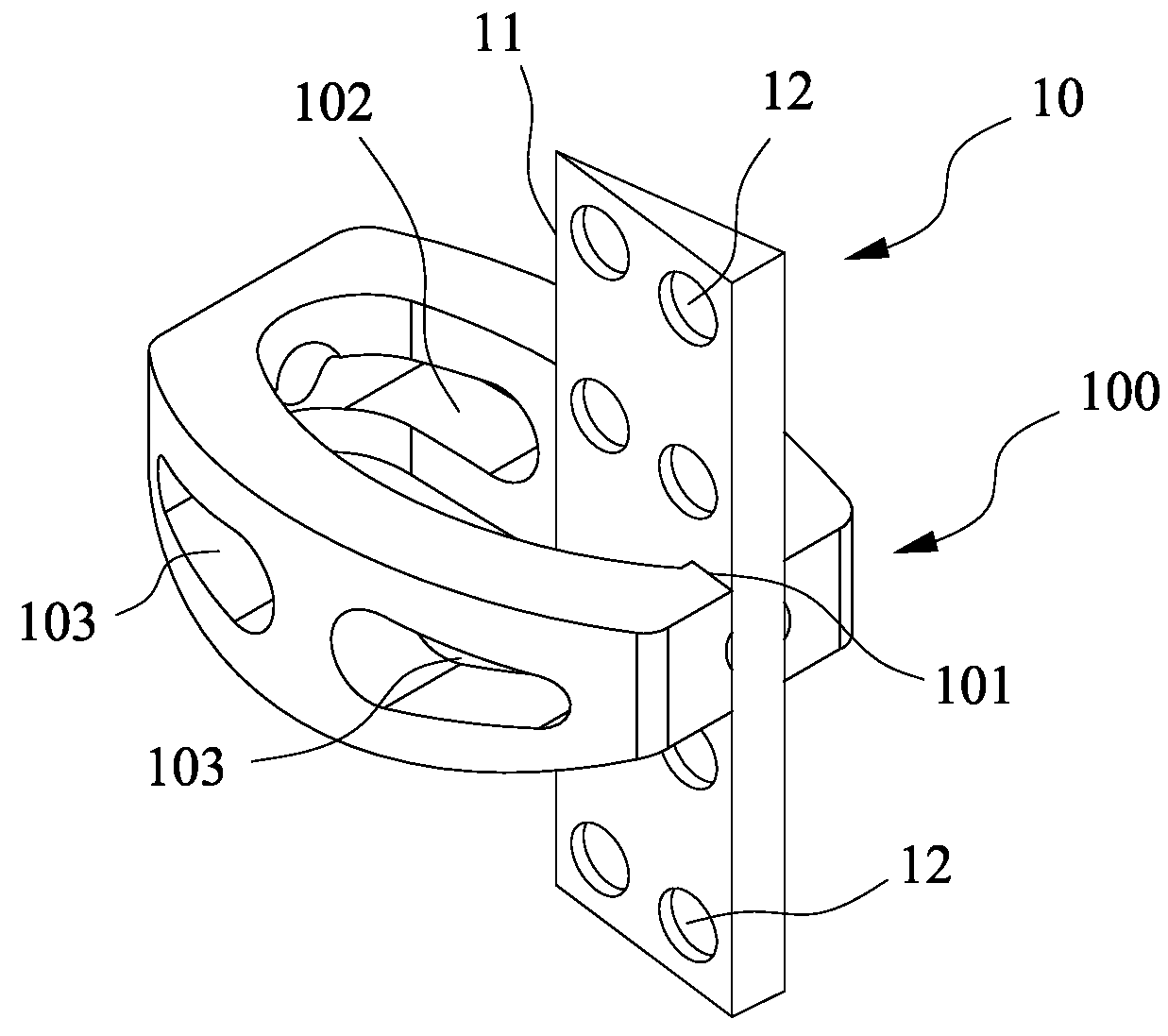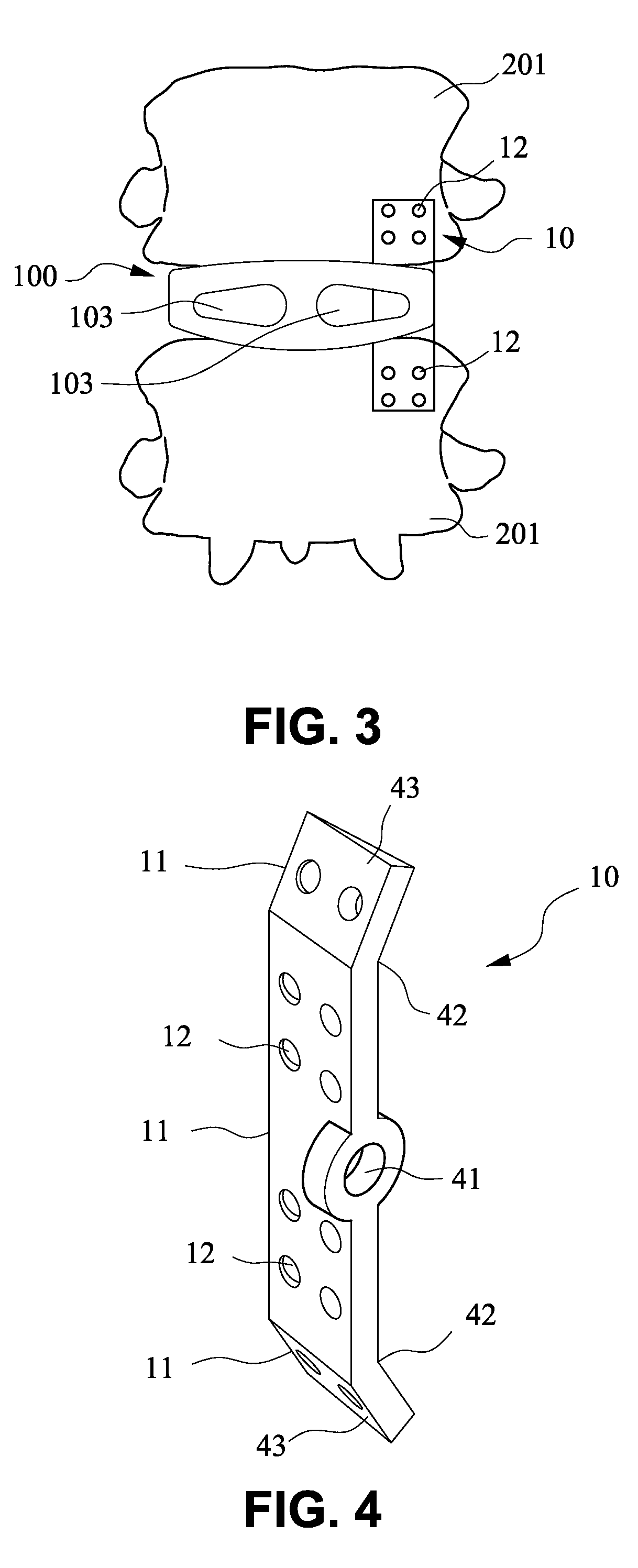Trans-Vertebral and Intra-Vertebral Plate and Fusion Cage Device for Spinal Interbody Fusion and Method of Operation
a technology of transvertebral plate and fusion cage, which is applied in the field of transvertebral plate and intravertebral plate and fusion cage, can solve the problems of loosened screws inside the vertebral body or broken screws at the screw-rod junction results that are not uncommon, and surrounding soft tissues, and achieves enhanced fusion, simple operation, and limited intervertebral movement.
- Summary
- Abstract
- Description
- Claims
- Application Information
AI Technical Summary
Benefits of technology
Problems solved by technology
Method used
Image
Examples
Embodiment Construction
[0016]The above and other objects, features and advantages of the present invention will become apparent from the following detailed description taken with the accompanying drawing.
[0017]FIG. 1 shows a preferred embodiment of the present invention which comprises a trans-vertebral and intra-vertebral plate (10) and a rectangular cage (100) with a vertical slot (101) to accommodate the plate (10). The trans-vertebral and intra-vertebral plate (10) has one of its longer ends thinned (11) for the purpose of ease of penetrating into two adjacent vertebral bodies, and the thinned end is facing the cortical bones of the vertebral bodies during insertion. The surface of the plate is perforated (12) to facilitate bone ingrowth through the holes (12). The rectangular cage (100) has a vertical slot (101) on its lateral end to accommodate the plate (10), and the cage also has holes (103) to facilitate bone ingrowth. The plate and the cage can be made of any biocompatible materials such as tita...
PUM
 Login to View More
Login to View More Abstract
Description
Claims
Application Information
 Login to View More
Login to View More - R&D
- Intellectual Property
- Life Sciences
- Materials
- Tech Scout
- Unparalleled Data Quality
- Higher Quality Content
- 60% Fewer Hallucinations
Browse by: Latest US Patents, China's latest patents, Technical Efficacy Thesaurus, Application Domain, Technology Topic, Popular Technical Reports.
© 2025 PatSnap. All rights reserved.Legal|Privacy policy|Modern Slavery Act Transparency Statement|Sitemap|About US| Contact US: help@patsnap.com



